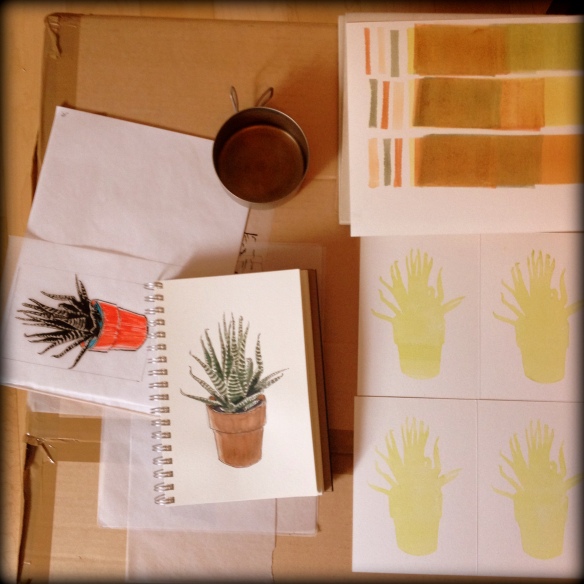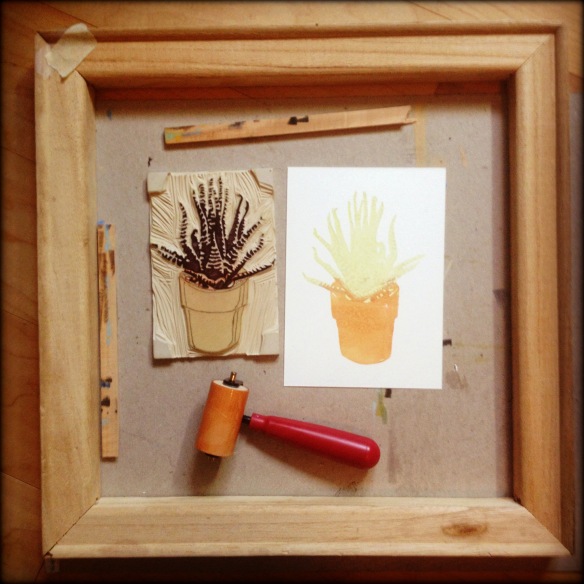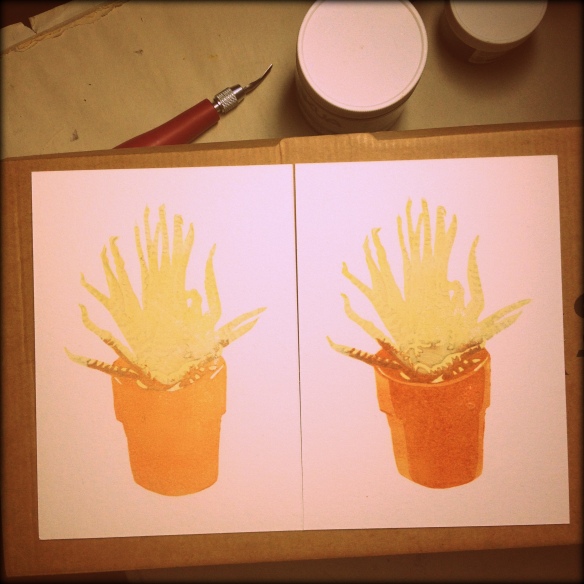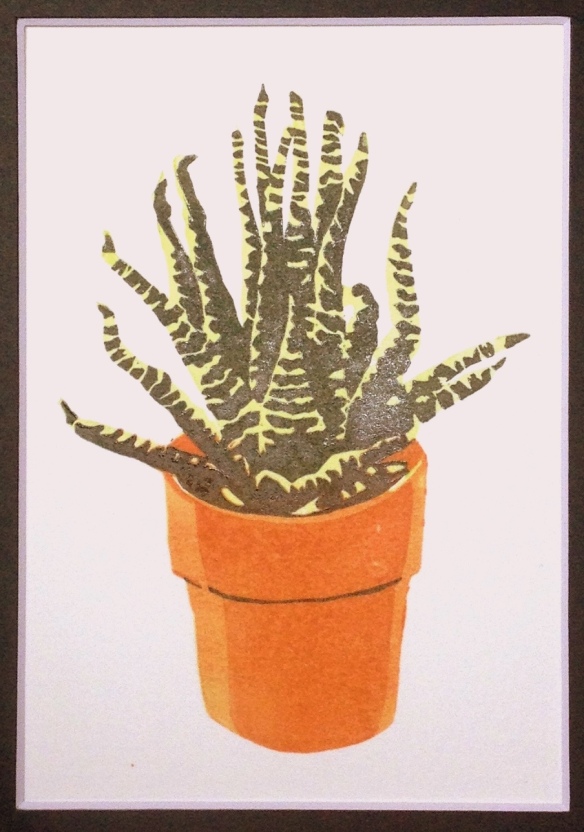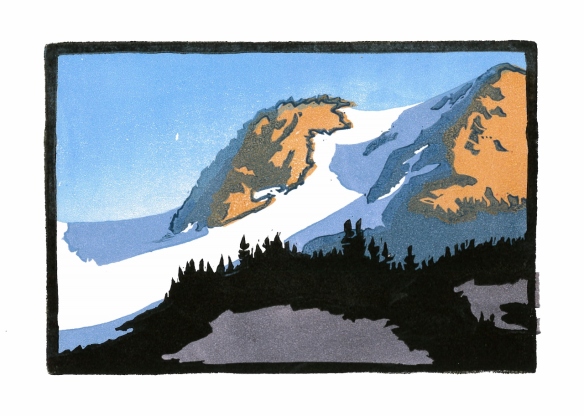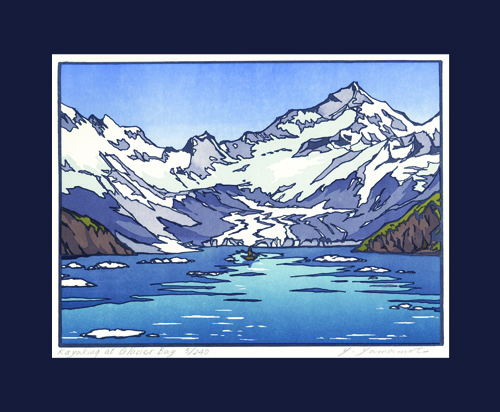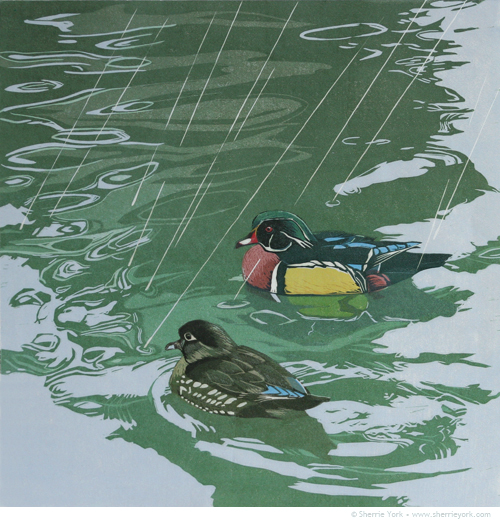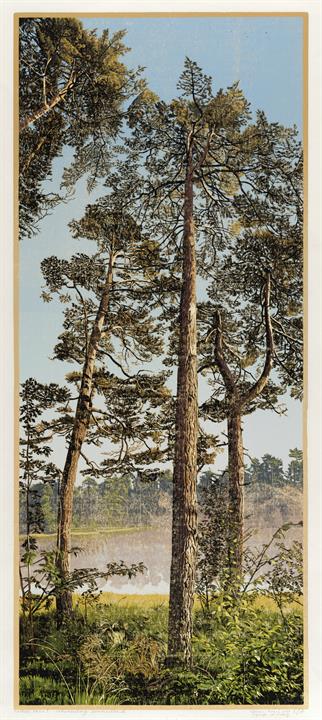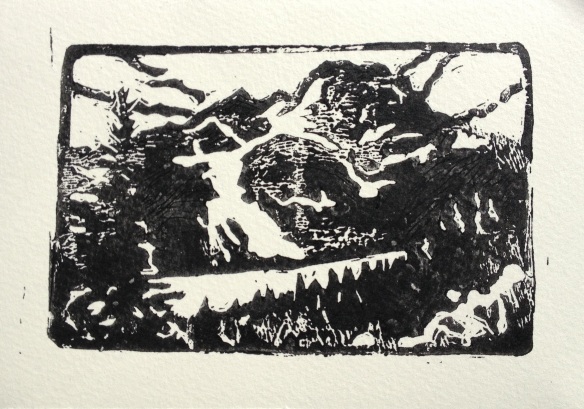
The Good Old Days – One Of My First Prints
Well. I’ve smacked into a metaphorical wall.
For two years I have been flowing happily along, thrilled with carving and printing.
In the print of Mount Robson shown above – one of my first – I was so charmed by the process that I embraced and loved all of the little inconsistencies.
Sure, as I continued there were little signs of trouble – that oily halo on that one series of prints, or that top layer of ink that never seemed to fully dry. But mostly I ignored these things and eagerly moved on to each new print.
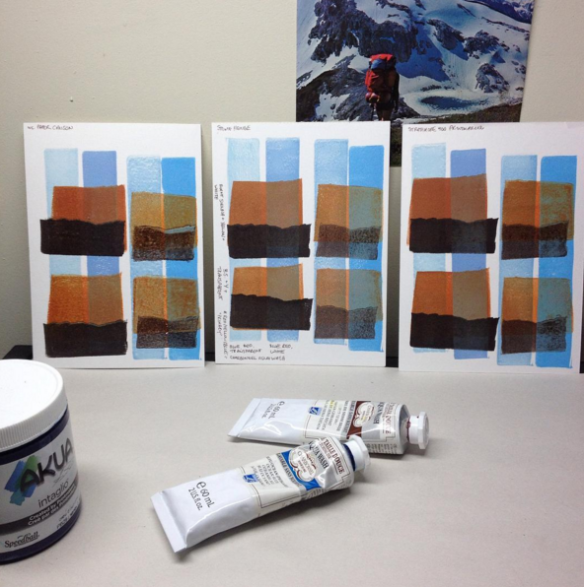
Testing Charbonnel and Akua Inks on Three Paper Types
Now that I’m considering opening an Etsy shop, I’m suddenly experiencing a strong desire to figure out the technicalities. If I’m selling a print, I need to be as confident in its structural qualities as I am in the image itself.
This is a good thing!
It does feel a little bumpy, though. I’ve left the euphoric delirium of new love and arrived at the place where it feels a little like work. And like any relationship, this one is unique and requires experimentation to successfully navigate. What has worked for others may or may not work for me, so I will need to do some first-hand research.
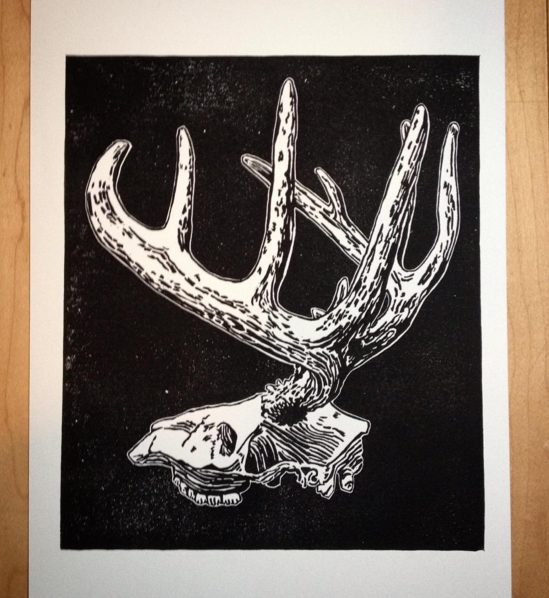
Testing, Testing – Oh Deer!
Right now, there are a number of tests happening and planned in my studio. For one single-colour print (the deer skull shown), I’m trying (on Stonehenge paper):
- Akua Intaglio Mars Black
- Akua Intaglio Carbon Black
- Daniel Smith Water Soluble Lamp Black
- Caligo Safe Wash Relief Ink in Black
- Akua Intaglio Carbon Black with Akua Mag Mix
- Akua Intaglio Carbon Black with Kama Cobalt-Zirconium Dryer
To be honest, this experimentation is not my favourite thing. I would rather just get on with drawing and carving something new. But I’m in it for the long run. I can’t run away or ignore the bits that aren’t working. Now is the time to fight and persevere and muddle forward.
“The best way out is always through” – Robert Frost


